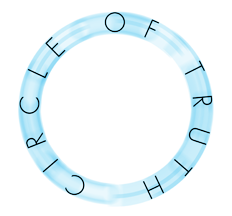Rhea Carmi Essay
#17 Randall Cade (Visiting Painting)
#18 Rhea Carmi (Response Painting)
While viewing the previous artist’s painting, I was struck
by its emptiness, and the feeling of solitude, but also by its illumination.
The empty table, Tabula Rasa, could stand for the beginning of life or the end of it. The lack of people, food, and the empty saltshaker could depict the end of the world or it could be rebirth – a new beginning, when the table will come to life with people coming together, being at peace with each other.
I started to assemble my thoughts. One possibility was to start from Tabula Rasa and use the salt as a metaphor. In ancient times salt was used as a preservative and hence a common interpretation of the metaphor for salt is its duty to preserve the purity of the world. Salt also became a symbol of incorruptibility, permanence, purity, perfection, wisdom, hospitality, durability, fidelity and peace. Salt was essential for human life and may also be interpreted on that basis.
What also came to mind was the phrase, salt of the earth. Salt as a chemical compound is extremely stable and cannot lose its flavor, hence the English expression, salt of the earth, stands for humbleness and a lack of pretension.
I digested those thoughts and decided to use the salt and soil as materials for the work. Both stand for life. In the process, I brought in my optimistic view of life and concentrated on the positive. A new beginning, rebirth with peace on earth. The sign of the peace movement in the upper right corner of the work shines upon us and brings light into our lives as with the metaphors salt and light.



